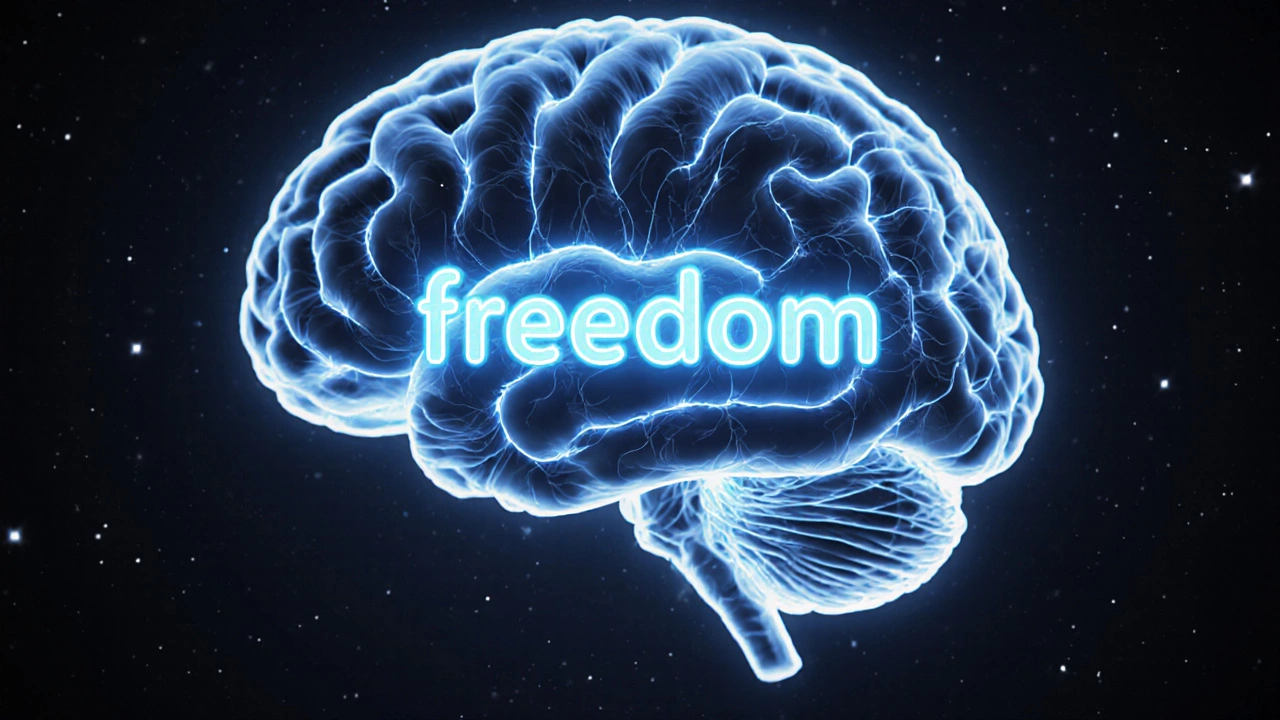The Power of a Single Word: How One Word Can Change Minds
 Oct, 12 2025
Oct, 12 2025
Word Impact Analyzer
Analyze Your Word
How This Works
This tool evaluates how effectively your word would work in communication based on three factors: emotional resonance, context relevance, and cultural appropriateness. Enter your word and select your communication scenario to receive a detailed impact analysis.
Ever heard a phrase that stuck with you for years, even after the rest of the sentence faded? That’s the magic of a single word-its ability to spark emotion, shape opinions, and drive action. In a world overflowing with information, mastering the power of one word can turn a bland message into something unforgettable.
One word isn’t just a grammatical unit; it’s a psychological trigger. When used deliberately, it can condense complex ideas, create instant resonance, and even alter behavior. Below we’ll unpack how this works, explore real‑world examples from literature, marketing, and politics, and give you practical steps to harness that punchy potential.
Why a Single Word Carries Weight
Researchers in cognitive linguistics have shown that the brain processes words faster than longer phrases because a single lexical item can activate a whole network of associated concepts. This is known as semantic priming. When you hear the word "freedom," memories of liberty, protest, and personal stories light up simultaneously, making the message feel richer than the word itself.
From a neurology standpoint, the amygdala reacts strongly to emotionally charged words, releasing dopamine that reinforces memory. That’s why slogans like "Just do it" linger longer than a full‑length description of a product's features.
Literary Power: One Word That Changed a Story
In literature, a single word can be the turning point of a narrative. Consider Ernest Hemingway’s famous six‑word story: "For sale: baby shoes, never worn." Those six words, and especially the word "never," compress grief, hope, and loss into a micro‑novella that still moves readers today.
Another classic example is the word "red" in Nathaniel Hawthorne’s "The Scarlet Letter." The color becomes a symbol of shame, passion, and redemption, shaping the entire novel’s themes with just one hue.
These cases illustrate how authors use literary device of focal word to create a hook that guides readers’ emotions and interpretations.
Marketing Magic: Brands Built on One Word
Brands know that a single, well‑chosen word can define an entire identity. Think of "Apple," "Nike," or "Google." Each word carries a promise-innovation, performance, search-and instantly positions the brand in the consumer’s mind.
In advertising, the call to action often hinges on a single verb. "Buy," "Save," "Discover" are verbs that drive immediacy. A famous case study from 2022 showed that email subject lines with a single action word improved open rates by 31% compared to longer, descriptive titles.
When crafting copy, marketers use the “word influence matrix”-a checklist that aligns a chosen word with target emotion (trust, excitement, urgency) and desired behavior (click, share, purchase).

Political Persuasion: Slogans That Shift Nations
Political movements thrive on concise messaging. "Hope" powered Barack Obama’s 2008 campaign, while "Brexit" condensed years of debate about EU membership into a single, emotionally charged term.
Even more striking is the word "freedom" in various revolutions-from the American Revolution’s rallying cries to the fall of the Berlin Wall. These words act as rallying flags, uniting disparate groups under a shared ideal.
Behind the scenes, speechwriters apply neurolinguistic programming techniques, selecting words that bypass logical resistance and tap directly into subconscious values.
How One Word Works in the Brain
Three key mechanisms explain the punch of a solitary word:
- Associative Networks: A word triggers clusters of related memories and feelings, creating a cascade effect.
- Emotional Salience: Words with strong affective charge (e.g., "love," "fear") engage the limbic system, making the message memorable.
- Simplicity Bias: The brain prefers concise information; a single word reduces cognitive load, increasing acceptance.
Understanding these mechanisms helps you pick words that not only fit the context but also amplify the intended reaction.
Practical Tips: Choose Your Word Wisely
- Identify the Core Emotion: Ask yourself what feeling you want to evoke-trust, urgency, joy, or rebellion.
- Test for Clarity: Run the word by a small focus group; if anyone misinterprets it, replace it.
- Check Cultural Sensitivity: A word that works in the U.S. might be offensive in India or the Middle East.
- Pair with Visuals: Pairing a powerful word with a simple image (like "Free" over a soaring bird) multiplies impact.
- Use Rhythm: In speech, place the word at the end of a sentence for a ‘climactic’ punch.
Applying these steps can turn an ordinary announcement into a headline that gets shared thousands of times.

Common Pitfalls to Avoid
Even seasoned communicators slip up. Below are the most frequent mistakes and how to fix them:
| Pitfall | Why It Fails | Correction |
|---|---|---|
| Vagueness | Word is too generic, loses impact. | Choose a concrete, sensory word. |
| Over‑use | Repeating the same word dilutes power. | Reserve the word for headline or closing line. |
| Cultural Misalignment | Word carries unintended connotations. | Research local meanings before deployment. |
| Mis‑matching Tone | Word feels out of place with overall voice. | Align word with brand’s established tone. |
Examples Across Different Fields
Below is a quick snapshot of how one word operates in three domains:
| Domain | Word Used | Primary Goal | Result |
|---|---|---|---|
| Literature | "Alone" | Convey isolation | Creates an immediate sense of loneliness that frames the narrative. |
| Marketing | "Free" | Drive conversion | Increases click‑through rates by up to 45% in ecommerce ads. |
| Politics | "Change" | Mobilize voters | Served as the rallying cry for multiple election cycles worldwide. |
Next Steps: Put the Power to Work
Ready to test the concept? Pick a current project-whether it’s a blog post, a product tagline, or a speech. Follow the checklist above, choose one word that aligns with your core emotion, and embed it strategically. Track engagement metrics (open rates, shares, conversion) to see the lift. Iterate based on feedback, and soon you’ll wield the word influence like a pro.
Frequently Asked Questions
Why does a single word stick in memory better than a phrase?
A single word triggers semantic priming, activating a network of related concepts at once. This rapid activation creates a stronger neural imprint, especially when the word carries emotional weight.
Can the same word have different impacts in different cultures?
Yes. Cultural context shapes the connotations of words. For example, the word "liberal" is positive in many Western democracies but can be viewed negatively in certain Asian political climates. Always research local meanings before launching a campaign.
How many times can I repeat the same word before it loses impact?
Generally, use a powerful word only once per core message-ideally in a headline or closing line. Repeating it dilutes its novelty and can make the audience feel spammed.
What research methods help validate the right word choice?
A/B testing is the most common. Show two variants of a headline-each with a different single word-to a segment of your audience and compare click‑through or conversion rates. Qualitative focus groups also reveal emotional reactions.
Is there a risk of oversimplifying complex ideas with just one word?
Yes. If the audience lacks context, a single word can be misinterpreted. Pair it with supporting visuals or a brief clarifying sentence to ensure the intended meaning gets across.